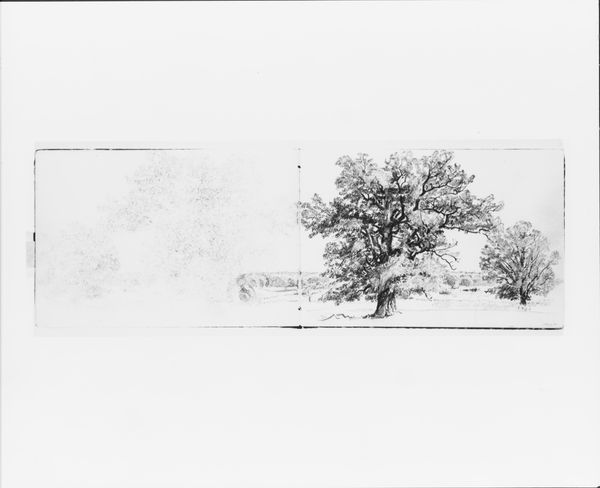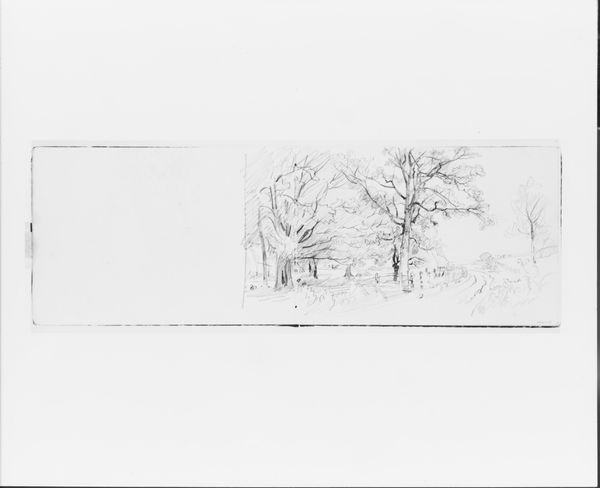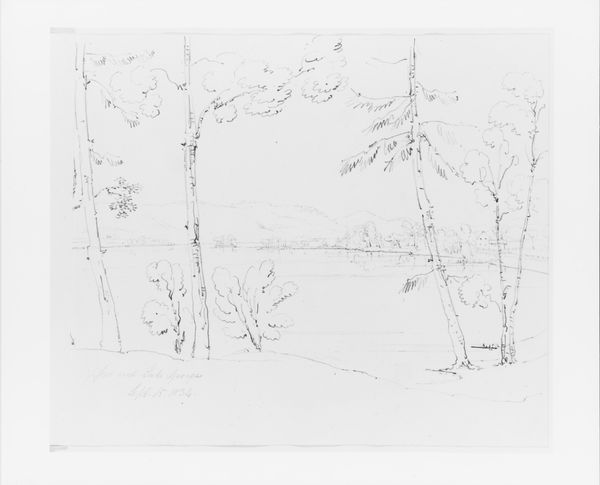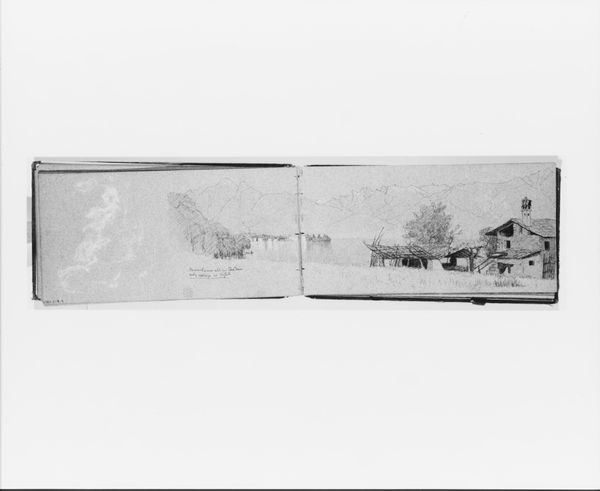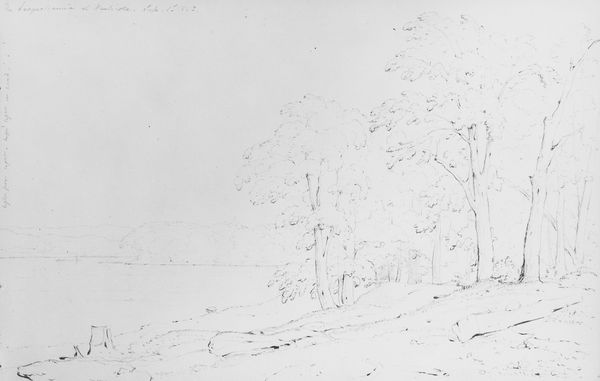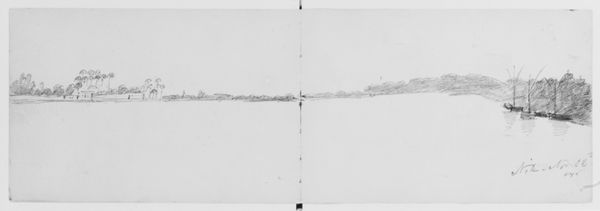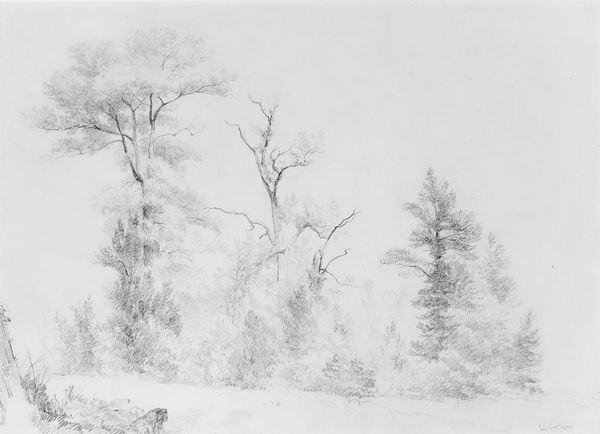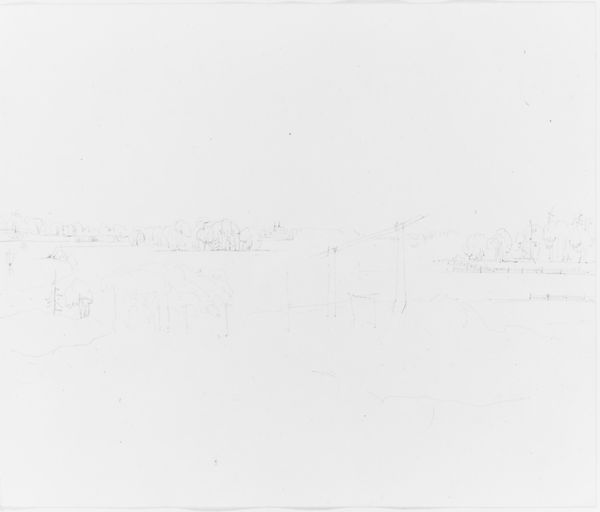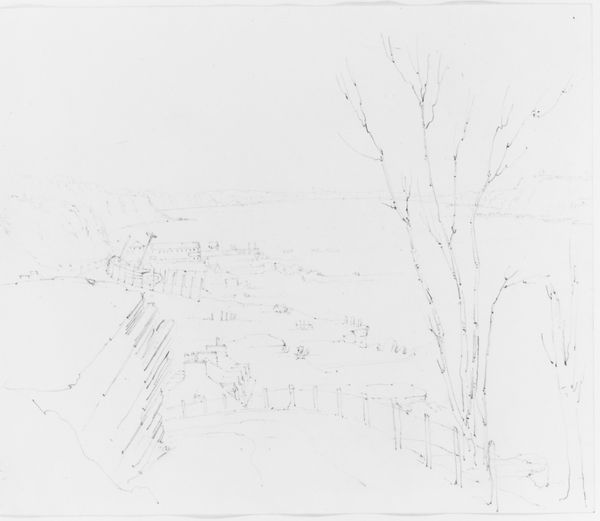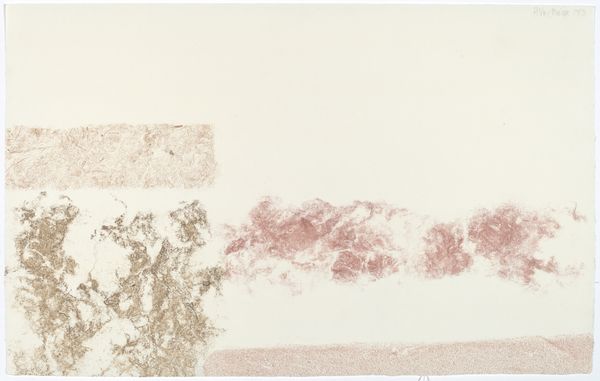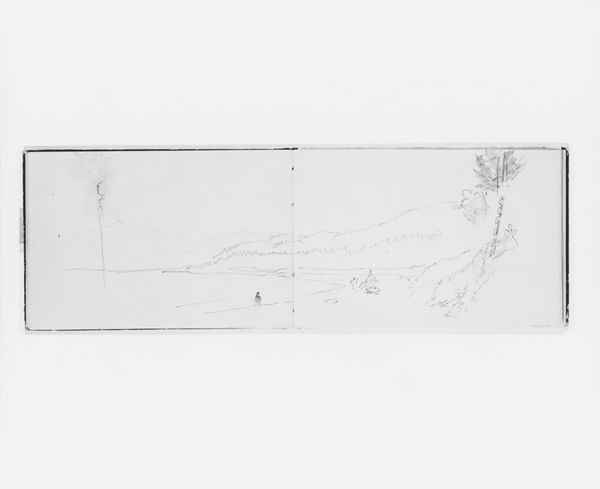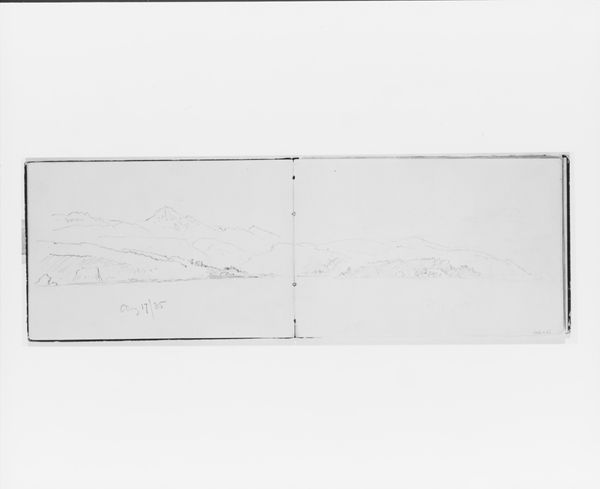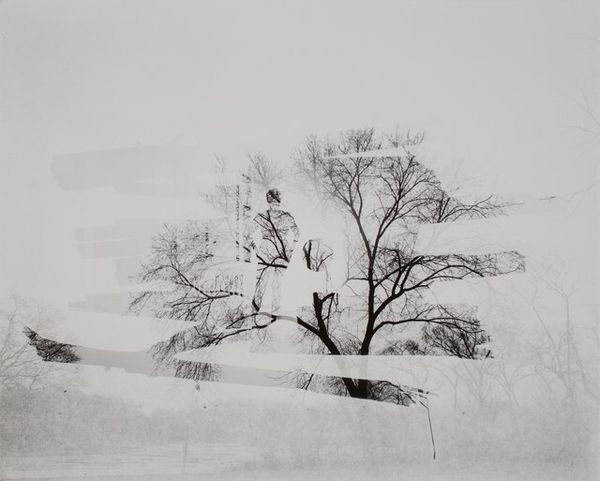
Landscape with Trees, Mountains, and Country Lane (from Sketchbook VII) 1886
0:00
0:00
Dimensions: 5 x 7 1/2 in. (12.7 x 19.1 cm)
Copyright: Public Domain
Curator: Here we have "Landscape with Trees, Mountains, and Country Lane" from Sketchbook VII, dating back to 1886, created by William Trost Richards. It’s a lovely pencil and graphite drawing currently housed at the Metropolitan Museum of Art. My first impression? It feels serene, almost ethereal, with the soft pencil strokes capturing the tranquility of the countryside. The light seems to shimmer off the page. What do you think? Editor: The emptiness and muted tones evokes in me the symbol of waiting—a dream perhaps. I notice how the trees, even though still in pencil, become archetypes. Richards isn't merely sketching; he's imbuing each form with layered symbolism. Curator: Precisely. Richards was known for his precise realism, especially in seascapes. But here, there's a dreamier quality, as you say, like he’s allowing himself to drift into the landscape, becoming a part of it. Look how the mountains in the distance seem to fade into the sky. Editor: Mountains in art, across cultures, have always represented aspiration and a connection to something higher. And it is just like that here: note how the line gently pulls your eyes heavenwards. Plus, the trees act as guardians, delineating spaces within the psyche, whispering untold stories. Curator: That's insightful. Considering the era, late 19th century, landscape art was evolving. Was this a nostalgic glance towards an untouched nature? It makes you wonder what these scenes represented to people then. A contrast to a rapidly industrializing world? Editor: Definitely a reaction against the march of modernity. Richards turns to the natural world not just as an escape, but as a vessel of deeper meanings lost to industrialization. This almost-primal scenery taps into a collective longing for the purity of nature and origin. It's like looking into one's origin, as one may dive into the self-hood. Curator: The composition is interesting too, almost divided—one side feels lighter, more open than the other. Perhaps even representing the contrast? I think Richards makes me nostalgic too. For simpler things. Editor: Indeed. As we linger here, let’s appreciate that we've not just witnessed a landscape, but an invocation of memory, loss, and an enduring connection between the human spirit and the enduring allure of the natural world.
Comments
No comments
Be the first to comment and join the conversation on the ultimate creative platform.
